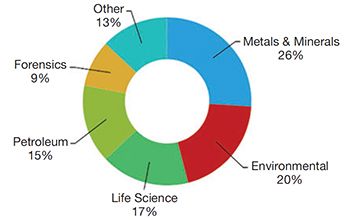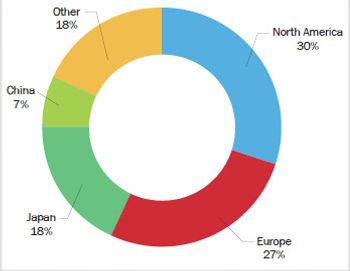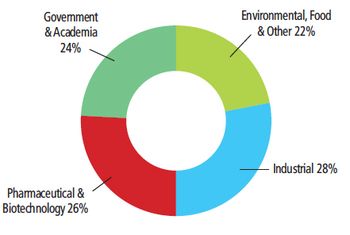
- Spectroscopy-10-01-2006
- Volume 21
- Issue 10
Market Profile: Absorbance Colorimeters
The worldwide market for absorbance colorimeters was worth close to $90 million in 2005. Colorimeters also are referred to as photometers and should not be confused with other fundamentally different types of instruments that are also referred to as colorimeters. They are commonly found at the heart of water testing kits that can be configured for numerous applications. Although the market is mature, demand for the technique remains cogent.
The worldwide market for absorbance colorimeters was worth close to $90 million in 2005. Colorimeters also are referred to as photometers and should not be confused with other fundamentally different types of instruments that are also referred to as colorimeters. They are commonly found at the heart of water testing kits that can be configured for numerous applications. Although the market is mature, demand for the technique remains cogent.
Colorimeters that measure the absorbance of solutions also are referred to as photometers, and generally are classified as a type of visible spectrophotometer. By passing a single wavelength of visible light through a sample solution, they can measure the amount of light absorbed by the sample, which is directly proportional to its concentration. Another type of instrument that also is referred to as a colorimeter measures the reflected light from a solid sample in order to simulate how it is seen by the human eye, but it is a fundamentally different type of instrument.
Colorimeters for absorbance measurement often are sold as part of test kits for water analysis, which include reactive dyes for identification of specific compounds such as ammonia, bromine, and chromium, among many others. More than half of the market is composed of these reagents and other peripheral products.
The market for absorbance colorimeters is highly concentrated, with the top three vendors accounting for more than two-thirds of the market share. However, there are still a fairly large number of small vendors in the market due to the relative simplicity of the technology and the low cost of the instruments themselves. Annual growth in demand will remain consistent in the low single digits for the foreseeable future.
The foregoing data were extracted from SDi's market analysis and perspectives report entitled Edition Global Assessment Report, 9th Edition: The Laboratory Life Science and Analytical Instrument Industry, September 2006. For more information, contact Stuart Press, Senior Consultant, Strategic Directions International, Inc., 6242 Westchester Parkway, Suite 100, Los Angeles, CA 90045, (310) 641-4982, fax: (310) 641-8851,
Articles in this issue
about 19 years ago
Electron Ionization: More Ins and Outsabout 19 years ago
A Timeline of Atomic Spectroscopyabout 19 years ago
Think Small: Low-Cost Optical Spectral Measurements for Chemical Sensingabout 19 years ago
ProductsNewsletter
Get essential updates on the latest spectroscopy technologies, regulatory standards, and best practices—subscribe today to Spectroscopy.





